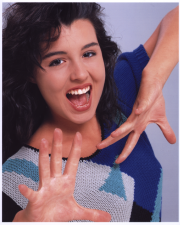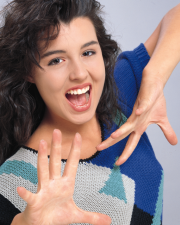|
Compression Artifact Reduction
Problem statement
Low resolution images and videos from digital cameras and cell
phones suffer from blocking and ringing artifacts caused by
compression. We would like to improve the quality of these images
and videos in order to improve their display and printing. Our
approach uses weighted combinations of shifted transforms to produce
very good results, lowering both ringing and blocking artifacts
while adapting automatically to the quality of the input images.
Outline
A fast growing archive of JPEG images and short MPEG video clips
is generated by digital still cameras. Unfortunately, ringing and
blocking artifacts from the block DCT compression may degrade the
quality of these images. Reducing these artifacts may improve the
display and printing from cell phone camera photos, video clips,
images cropped from high-resolution compressed images and images
found on the web. Reducing these artifacts also improves the results
from subsequently applied algorithms, such as upsampling and color
adjustments, that may otherwise accentuate the compression
artifacts. Compression artifact reduction also has the potential to
improve the millions of images in the accidental archive that the
web has become.
A new method, using weighted combinations of shifted transforms,
is developed for deringing and deblocking DCT compressed color
images. The method shows substantial deringing improvement over
prior methods, maintains comparable deblocking and shows comparable
PSNR gains. The method automatically adapts to input image quality,
and it may be implemented using low-complexity, swath-based
processing. Multiplier-less transforms better suited for parallel
hardware implementation are developed. Finally, PSNR comparisons are
provided for the different methods. The new method using the DCT
transform offers good visual results with PSNR comparable to prior
work, and the multiplierless transforms offer good visual results at
a slight loss in PSNR.
Technical details are found
here.
Last modified:
Wednesday, July 25, 2007 17:47:59 -0700
PhotoPlus: Auxiliary information for printed images
Problem statement
A printed photograph is difficult to reuse because
the digital information that generated the print is not
available any more. This work describes a mechanism for
approximating the original digital image by combining a
scan of the printed photograph with small amounts of
digital auxiliary information kept together with the
print.
Outline
There are three main distortion components introduced by the
print-scan channel: 1) registration errors; 2) color distortions;
and 3) limitations of the print-scan channel in representing higher
frequencies and noise. The auxiliary information that is transmitted
comprises three components to correct for these three types of
error. It turns out that accurate registration and color-correction
can be achieved with very limited auxiliary information. For the
example below (the digital image was printed and scanned, and then
reconstructed using our algorithm) only 4.6 kilobytes extra
information provided a reconstruction of the original with around
32dB PSNR.
However, there is still degradation due to limitations of the
print-scan channel as well as residual noise, which is corrected
using a Wyner-Ziv layer comprising the bulk of the bit-stream.
During reconstruction, the image is first registered and
color-corrected with the first two auxiliary information components,
and the resultant image then acts as good side-information to decode
the Wyner Ziv layer.
 |
 |
 |
| scanned image of the print |
the original digital image |
registered, color corrected scan using only
4.6 kB |
Technical details will be described in the near future (this is
joint work with Debargha Mukherjee)
Geometrical methods for lightness
adjustment in YCC Color Spaces
Problem statement
The most common color spaces for compressed images
and videos are variations of YCC. We address lightening
and darkening images directly in YCC space by developing
methods that implement efficient geometrical
computations along paths in YCC space. Our approach
provides improved results that remove or greatly reduce
the color clipping that can occur using traditional
methods.
Outline
Lightening or darkening an image is a fundamental adjustment used
to improve aesthetics or correct exposure. We developed new
geometrical algorithms for lightness adjustment, implementing fast
traversal of colors along lightness-saturation curves, applicable
when the data starts naturally in YCC space (JPEG images or MPEG
videos). Here, YCC refers generically to color spaces with one
luminance and two color difference channels, including linear YCC
spaces and CIELAB. Our first solution uses a class of curves that
allows closed-form computation. Further assuming that saturation is
a separable function of luminance and curve parameter simplifies the
computations. This approach reduces clipping and better adjusts
lightness together with saturation. Preliminary evaluation with 96
images finds good subjective results, and clipping is reduced to
about 5% of a prior approach.
Technical details are found
here.
Last modified:
Wednesday, July 25, 2007 17:47:59 -0700
|
